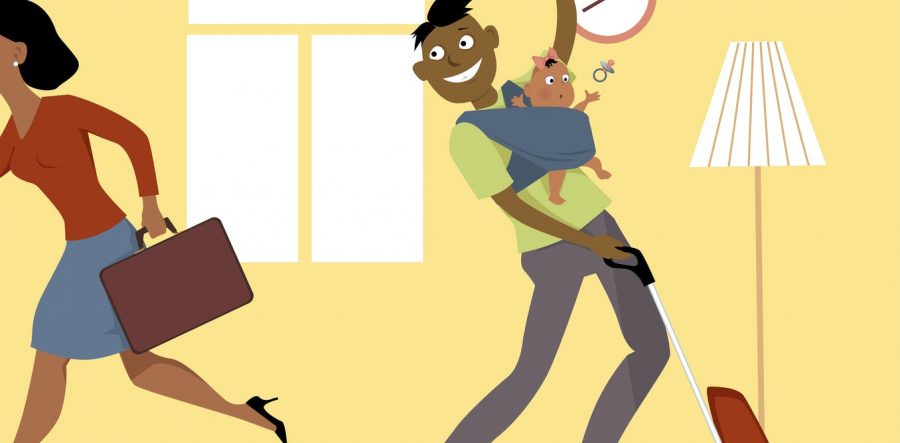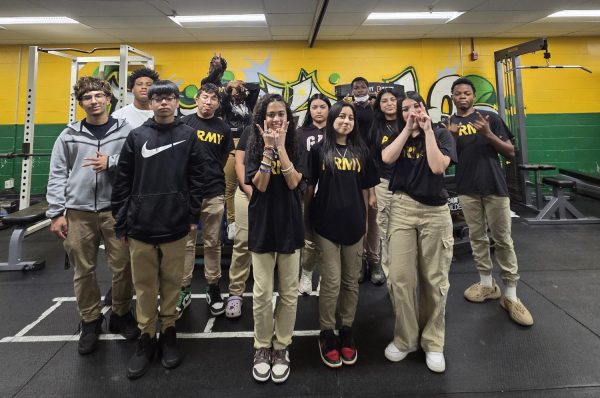Gender roles? What is it and what are its effects?
Girls like pink and boys like blue. Women have to learn how to cook and clean. Men have to learn how to work hard to provide for their family. These are just some stereotypical gender roles that are outdated.
In society, there are gender roles where we’re expected to act, dress, speak, and behave a certain way based on our gender. For example, boys and men are expected to be aggressive, bold, and strong. Girls and women are expected to dress in feminine ways and be polite and nurturing. However, have these roles changed overtime ?
Gender roles in the Latinx community are pretty dominante due to the culture. Machismo is very common. This is the sense of being “manly” and having masculine pride. It could also translate to being “sexist”, This diminished the female gender because machistas believe that they have control and power over women.
Traditional gender roles are very much still being taught to new generations, because of how people were raised. It’s common that parents teach their children these gender roles just how their parents taught them.
Girls are told to help their mothers with cleaning the house. They are also taught from a young age that women serve men and attend to their needs. Boys aren’t given as many chores or household responsibilities.
“At home, I don’t really clean or anything. I only clean my room,” said freshman Victor Izaguirre. “I just take out the trash and help my dad work on cars sometimes.”
There is a difference between machismo and social behavior. In social behavior, you have a certain mentality based on the way you were raised. These gender roles have been normalized to many people. Because they have grown up with this, they don’t think anything bad about them.
However, the newest and largest generation, Gen Z, is more open to gender flexibility than other generations. Gender flexibility could mean that boys are allowed to be emotional and girls can be “strong”. Gender flexibility can break “traditional” gender roles.
Gen Z has pushed away traditional gender roles. They don’t apply gender to products that are to be “femenine” or “masculine”. An example of this is nail polish and makeup. These are things that are associated with females. However, many men wear this because they like it. Also, they wear it because they don’t care about toxic masculinity.
Men are expressing their sense of style using these products, as gender norms are fading.
“What women wear. What men wear. For me it’s not a question of that,” said Harry Styles in an interview with The Guardian. “If I see a nice shirt and get told, ‘But it’s for ladies.’ I think: ‘Okaaaay? Doesn’t want to make me wear it any less though,’ I think the moment you feel more comfortable with yourself, it all becomes a lot easier.”
Men have also been more comfortable with being stay-at-home dads while the wife works and provides for the family.
“I didn’t want to think of myself in such a negative light, because I knew that being a stay-at-home dad was this amazing privilege I had,” said Jason Basa Nemec in an article on the Washington Post. “It was a gift.”
However, Nemec shares that he still struggled with his identity, because of the old-school notion of what makes a man. Nemec didn’t believe in the notion of masculinity, but still found himself tied to this.
Statistics from Refinery29 and Chase have found that 40 percent of women are now primary breadwinners of households.
Gender roles are still going to exist because of old-school teachings from previous generations. Gender stereotypes can also impact how people live. These stereotypes don’t help those who want to try new things.
According to an article on the Harvard Business School website, about 60 percent of women earn advanced degrees, but are still being paid less. Women fill fewer seats in male-dominated professions. Gender stereotypes affect women’s self confidence. Katherine Coffman says that lack of confidence causes women to question their own ability.
Your donation will support the student journalists of Parkdale High School. Your contribution will allow us to cover our annual website hosting costs and publish some printed editions, as well.







